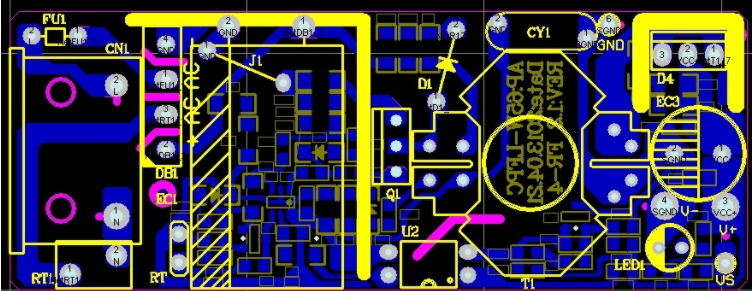PCBA cleaning is one of the processes of PCBA electronic placement. With the continuous improvement of assembly density and complexity, it has become the focus of the production and processing of high-performance products such as military and aerospace, and has attracted more and more attention from the industry. In order to improve the reliability and quality of electronic products, PCBA residues must be strictly eliminated, and these contaminants must be completely removed when necessary.
So what are the detection methods for PCBA contaminants?
1. Visual inspection
Use a magnifying glass (X5) or optical microscope to observe the PCBA, and evaluate the cleaning quality by observing whether there are solid flux residues, tin dross tin beads, unfixed metal particles and other contaminants. The requirement for the surface of PCBA is that it must be very clean and there should be no traces of residues or contaminants. This is a qualitative indicator. Inspectors usually take the user's requirements as the goal, and formulate their own inspection judgment standards and the magnifying glass used for inspection. The characteristic of this method is simple and easy to implement. The disadvantage is that it cannot check the pollutants at the bottom of the components and the residual ion pollutants. It is suitable for electronic products with low requirements.
Observe PCBA with microscope

2. Solvent extract test method
The solvent extraction test method is also called the ionic pollutant content test. It is an average test of the content of ionic pollutants. The test generally adopts the IPC method. (IPC-TM-610.2.3.25), it is to immerse the cleaned PCBA into the test solution of the ion degree pollution analyzer (75%±2% pure isopropanol plus 25% DI water), and the residual ion The substance is dissolved in the solvent, and the solvent is collected, and its resistivity is measured.
Ionic pollutants usually come from the active substances of the flux, such as halogen ions, acid radical ions, and metal ions produced by corrosion. The result is expressed by the amount of sodium chloride (NaCl) per unit area, that is, these ionic pollutants (only Including the total amount of NaCl that can be dissolved in the solvent, it is equivalent to the amount of NaCl, and it does not necessarily exist on the surface of PCBA or only contains NaCl.
Comparison before and after PCBA cleaning
3. Surface Insulation Resistance Test Method (SIR):
The surface insulation resistance test method (SIR) is to measure the surface insulation resistance between conductors on the PCBA, and can point out the leakage of electricity under various temperature, humidity, voltage and different time conditions due to pollution. Its advantage is direct measurement and quantitative measurement, and it can detect the presence of flux in a local area. Because the residual flux in PCBA solder paste mainly exists in the gap between the device and the PCB, especially the solder joints of BGA, it is difficult to remove, in order to further verify the cleaning effect, or verify the safety (electrical performance) of the solder paste used, Usually measure the surface resistance between the components and the PCB to test the cleaning effect of PCBA.
The surface insulation resistance test method (SIR) measurement conditions are generally: an ambient temperature of 85°C, an ambient humidity of 85%RH and a measurement bias of 100V, and a test for 170 hours.